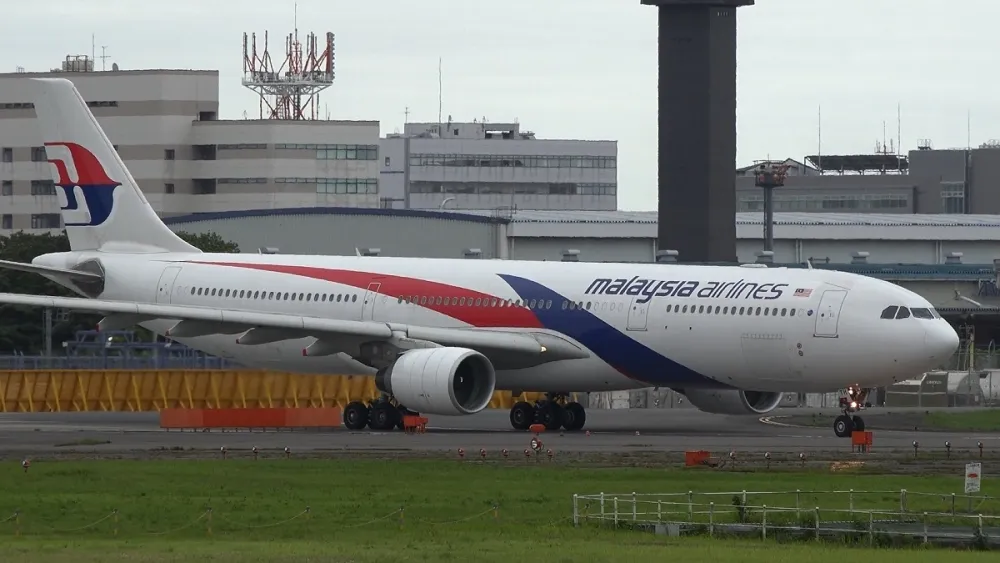
Malaysia A330 landing gear was replaced after Melbourne hard landing.
Apr 04, 2017

Following a hard landing incident in Melbourne, Malaysia Airlines took immediate action to replace the landing gear of one of its Airbus A330 aircraft. The incident raised safety concerns, prompting a thorough inspection of the aircraft to ensure its airworthiness. Engineers worked diligently to assess the extent of the damage, and the decision was made to replace the landing gear to maintain operational safety standards. This proactive approach underscores the airline's commitment to passenger safety and operational integrity, ensuring that all necessary maintenance procedures are followed to prevent future incidents.
On a recent flight operated by Malaysia Airlines, the Airbus A330 experienced a hard landing at Melbourne Airport, prompting immediate action regarding its landing gear. Ensuring the safety and reliability of aircraft is of utmost importance in the aviation industry, and this incident emphasizes the need for regular maintenance and timely replacements of critical components such as landing gear.
Understanding the Importance of Landing Gear
Landing gear plays a crucial role in the overall safety and functionality of an aircraft. It is designed to support the aircraft during taxiing, takeoff, and landing. The landing gear system comprises various components, including wheels, brakes, struts, and shock absorbers. Any damage to these components can significantly affect the aircraft's performance and safety during operations.
The Incident: A Hard Landing
The incident at Melbourne involved a Malaysia Airlines A330 that experienced a hard landing, leading to concerns about the integrity of its landing gear. Hard landings can result from various factors, including weather conditions, pilot error, or mechanical issues. After the incident, the maintenance team conducted a thorough inspection of the aircraft to assess any potential damage.
Inspection and Replacement Process
Following the hard landing, the aircraft underwent a comprehensive inspection. This included checking the landing gear for any signs of wear, cracks, or other damages that could compromise safety. The inspection revealed that the landing gear required replacement due to the impact sustained during landing.
Timeline of the Replacement Process
The replacement of the landing gear involves several critical steps, which are outlined in the following table:
| Step | Description | Timeframe |
|---|---|---|
| Initial Inspection | Conducting a detailed assessment of the landing gear and other related components. | 1-2 days |
| Parts Ordering | Ordering replacement components from manufacturers or approved suppliers. | 1 week |
| Removal of Old Gear | Carefully removing the damaged landing gear from the aircraft. | 1-2 days |
| Installation of New Gear | Installing the new landing gear, ensuring all components are correctly fitted and secured. | 2-3 days |
| Final Inspection | Conducting a thorough inspection of the new landing gear and system checks. | 1 day |
Impact on Operations
The replacement of the landing gear had implications for Malaysia Airlines' operational schedule. Aircraft grounded for maintenance can lead to delays and cancellations, impacting passengers and the airline's overall efficiency. However, prioritizing safety over schedules is vital in the aviation industry. Malaysia Airlines ensured that all necessary checks were completed before returning the aircraft to service.
Safety Standards and Regulations
Aircraft maintenance and repairs are governed by strict regulations set forth by aviation authorities worldwide. In Malaysia, the Civil Aviation Authority of Malaysia (CAAM) oversees aviation safety and ensures compliance with international standards. Airlines are required to adhere to maintenance schedules and report any incidents that could affect aircraft safety. Following the hard landing incident, Malaysia Airlines complied with all necessary protocols, including reporting the incident and conducting required inspections.
Lessons Learned
This incident serves as a reminder of the significance of regular maintenance and the importance of addressing potential issues promptly. Airlines must continuously train their personnel, ensuring they are equipped to handle emergencies and understand the critical nature of safety in aviation. The replacement of the landing gear is an essential part of this process, highlighting the need for vigilance in maintaining aircraft safety.
Conclusion
The Malaysia Airlines A330 hard landing incident at Melbourne has reinforced the importance of maintaining high safety standards in aviation. The swift and effective response by the maintenance team ensured that the aircraft was returned to service in a safe condition. Regular inspections, timely replacements, and adherence to safety regulations remain pivotal in the aviation industry, ensuring the safety of passengers and crew alike.
For airlines and maintenance organizations, investing in quality parts and skilled technicians is essential. The aviation industry thrives on reliability, and incidents like these only serve to strengthen the commitment to safety and excellence in aircraft operations.
As Malaysia Airlines continues to operate, lessons from this incident will undeniably influence future maintenance practices and policies, ensuring a safe flying experience for all passengers.
Related Articles

Explore Thailand: The Best Islands to Visit for Paradise, Adventure, and Relaxation

The Ultimate Guide to the Best Islands in Thailand for Your Next Getaway

Do babies need passports? How to get a passport for a newborn

How to get a U.S. passport fast: here’s how to expedite the process

What is Mobile Passport Control: 5 reasons why you should use it

SENTRI vs. Global Entry: A detailed guide

Do you need a passport to go to the Bahamas? Let’s find out

Do you need a passport to go to Mexico? A detailed guide

Do you need a passport to go to Canada? We got the answer

Do You Need a Passport for a Cruise: An Essential Travel Guide

Booster Seat Requirements: All the Rules to Follow in Your Rental Car

What Are the World’s Most Powerful Passports, and How Does Yours Rank?

How to Take a Passport Photo at Home: A Helpful Guide

You've got to have heart! Southwest's new livery

Your opinion: Should water be free on low cost carriers?

Young women bolder than guys as solo travellers
